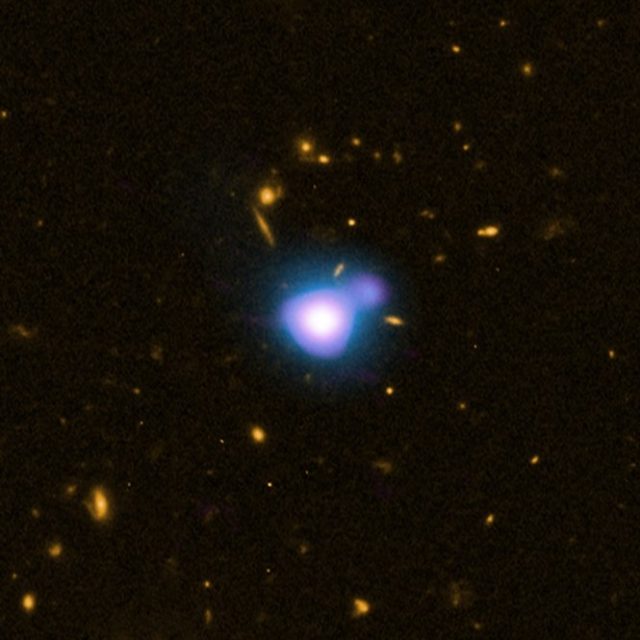Ancient quasar imaged when the Universe lacked heavy metal
Ars Technica » Scientific Method 2012-12-05

For a few instants after the Big Bang, the Universe was hot and dense enough to fuse hydrogen into helium and lithium. But this period of time was transitory. Heavier elements, including oxygen, carbon, and the like, didn't have time to form; they were the product of stars that only appeared hundreds of millions of years later. Modern galaxies still contain ancient stars with a composition corresponding to early times. However, there is a significant gap in our knowledge: no direct detailed chemical data from the first billion years of the Universe has been available.
Now a study of a quasar from 772 million years after the Big Bang has helped fill in that gap. Robert A. Simcoe and colleagues measured the absorption of light by gas immediately around the quasar, and determined it to be nearly devoid of elements heavier than helium. Their results leave two possibilities. If the hydrogen gas was part of an early galaxy, then it could have been part of the environment in which early (as yet unobserved) stars could form. Alternatively, if the gas was part of intergalactic space, it indicates that the first stars formed somewhat later than many models predicted.
The process of building chemical elements via nuclear fusion is known as nucleosynthesis. During the first few minutes after the Big Bang, conditions were right to produce most of the hydrogen, helium, and lithium in the cosmos, a process called Big Bang nucleosynthesis (BBN). Heavier elements, known (perversely) by astronomers as "metals", were later produced in stars via stellar nucleosynthesis, and distributed into interstellar space as those stars died.
Read 8 remaining paragraphs | Comments